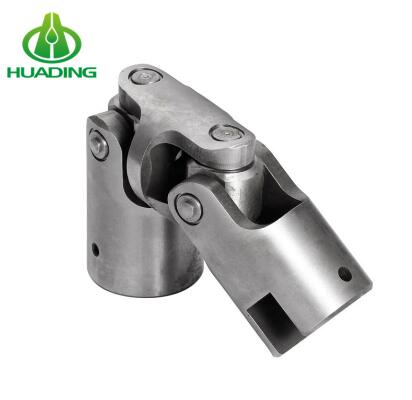The choice between constant velocity (CV) joints and universal joints (U-joints) depends on the specific application and requirements. Both types of joints serve different purposes and have distinct advantages and disadvantages. Here's a comparison to help you determine which is better for your needs:
CV Joints (Constant Velocity Joints):
Smooth and Consistent Power Transfer: CV joints provide continuous power transfer, which is crucial in applications that require a constant and smooth rotation, such as front-wheel-drive vehicles. They can handle high-speed, high-torque applications without significant vibration or interruption.
Reduced Vibration: CV joints are designed to minimize vibration and maintain a constant speed and torque output. This makes them ideal for applications where smooth operation is essential, such as automotive drivetrains.
Wide Range of Motion: CV joints can accommodate a wide range of angles and articulation, making them suitable for front-wheel-drive vehicles and other applications where the wheels need to pivot while maintaining power transmission.
Lower Maintenance: CV joints are often considered more durable and require less maintenance compared to U-joints. They are typically sealed and packed with grease, reducing the need for regular lubrication.
Higher Torsional Strength: U-joints can handle higher levels of torque, making them suitable for heavy-duty applications like trucks, construction equipment, and industrial machinery.
Simpler Design: U-joints have a simpler design compared to CV joints, which can make them more cost-effective and easier to replace.

Angular Misalignment: U-joints are better at handling angular misalignment between shafts. They can accommodate greater angles of deflection, making them suitable for applications with non-linear shaft configurations.
Versatility: U-joints can be used in a variety of applications, including those where space constraints limit the use of CV joints.
Considerations for Choosing:
Application: Consider the specific requirements of your application. If you need smooth, continuous power transmission and reduced vibration, CV joints are a better choice. For heavy-duty applications with higher torque demands, U-joints may be more suitable.
Space Constraints: If your application has limited space for joint installation, U-joints may be the only practical option due to their compact design.
Maintenance: Evaluate the maintenance requirements of your equipment. CV joints generally require less frequent maintenance, while U-joints may need more regular lubrication.
Cost: Depending on your budget and the complexity of your application, the cost of components and replacement parts may influence your decision.
In summary, neither CV joints nor U-joints are universally better than the other. The choice depends on the specific needs of your application, including torque requirements, space constraints, and the desired level of smoothness and consistency in power transfer.
263
0
0
All Comments (0)
If you are interested in sending in a Guest Blogger Submission,welcome to write for us!
Comments